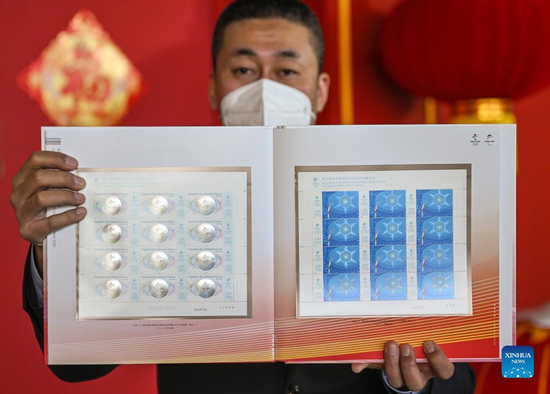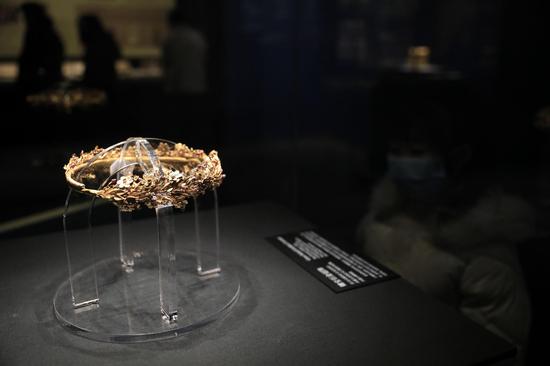The ever-strong coronavirus wave fanned by the Omicron variant is leading to more deaths and infections in the United States with each passing day, plunging the COVID-battered country deeper into the quagmire of the pandemic.
With the deadly pathogen still wreaking havoc on the country, causing hospital burnouts, labor shortages as well as a handful of other social and economic disruptions, U.S. media and health experts have predicted an even more pathetic scenario due to play out in February.
"DISORIENTING MOMENT"
"The Omicron surge has brought with it an especially potent and fast-moving wave of death across the United States," reported The New York Times on Friday, noting that the country's per capita death rate still exceeds those of other developed nations, a reflection of widespread resistance to vaccines and boosters in the United States.
Currently, more than 2,600 Americans die from COVID-19 each day nationwide, an alarming rate that has climbed by 30 percent in the past two weeks. Across the country, the coronavirus pandemic has claimed more than 900,000 lives, so far the highest death toll for a single nation in the world.
According to The New York Times, the Americans are experiencing "a disorienting moment in the pandemic."
While the number of new infections and hospitalizations is declining, "the deaths are still mounting and the threat from the virus is moving, for now, farther into the background of daily life for many Americans," it said.
FEBRUARY NIGHTMARE
Roughly one in five Americans had contracted Omicron by the mid-January peak, a number that could double by the time the surge ends in mid-February, Trevor Bedford, a virologist at the Fred Hutchinson Cancer Research Center, was quoted by The Wall Street Journal on Saturday as saying.
"Having (up to) 40 percent of the population infected by a single pathogen in the span of 8 weeks is remarkable," the virologist tweeted.
Not everyone who gets infected gets sick, but even if just 5 percent of those who got infected are sick, those are still very big numbers, said the report, warning of a grimmer picture of the country's anti-COVID fight.
"While Omicron infections have peaked in many places, February is likely to see similar case loads as the variant continues to spread before it flames out, causing worker shortages from hospitals to factories and spurring debate about COVID-19 restrictions," reported The Wall Street Journal. "The scale and speed of Omicron's spread make it comparable only to the 1918-1919 influenza pandemic."
TEST ACCURACY
With the federal government launching a program to send free at-home COVID-19 tests to Americans who sign up through the website COVIDTests.gov, 1 billion tests have been ordered for distribution via the U.S. Postal Service. And yet the lasting cold weather in most parts of the country might be an adverse factor.
Most at-home COVID-19 test brands recommend storing the tests above 35 degrees Fahrenheit (around 1.67 degrees Celsius). The liquid reagent inside the cartridge that comes with the at-home tests is susceptible to freezing, and if that happens, the accuracy of the results decreases, Cindy Prins, an infectious disease epidemiologist at the University of Florida, was quoted by USA TODAY as saying.
If the test is outside for a few hours, there are odds that the test is fine, although not as accurate as it once was. If the test is in the mailbox for a day or more, one'd better use a polymerase chain reaction (PCR) test instead or order another test, said Geoffrey Baird, chair of laboratory medicine and pathology at the University of Washington's School of Medicine.
GUIDELINES UPDATED
Against all the pandemic odds, the U.S. Centers for Disease Control and Prevention is planning to update its guidance on Feb. 7 for some people with weakened immune systems to receive a booster dose of the coronavirus vaccine three months after completing the initial series of the Pfizer-BioNTech or Moderna vaccine rather than at the current interval of five months.
On Friday, the agency updated its mask guidance, noting that wearing surgical masks could reduce the chances of testing positive by 66 percent and high-quality N95 and KN95 masks would provide much higher chances of avoiding infection.
However, mask-wearing has been a flash point for conflict in the country from the earliest days of the pandemic. Even now, there are still some people who refuse to wear masks out of belief that the pathogen is harmless.


















































 京公网安备 11010202009201号
京公网安备 11010202009201号